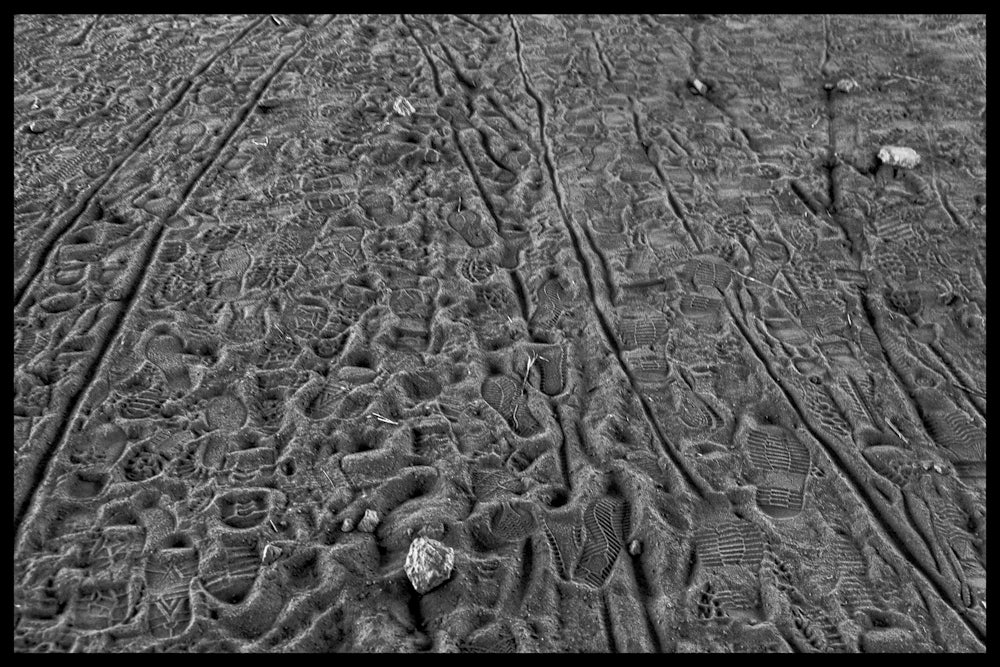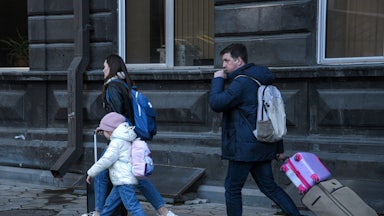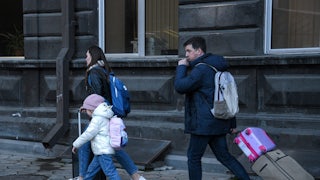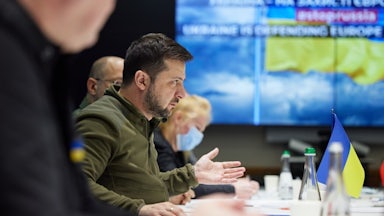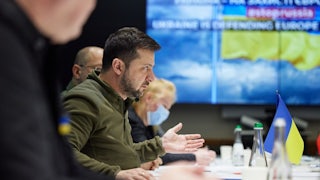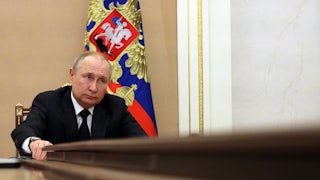It is impossible to purge from your mind the sights and sounds of exodus.
We see them every day, as Ukrainians flee from what they fear will be extinction if they stay in their homes. We are just beginning to understand how justified their fears are: In towns that Russian forces have withdrawn from, such as Bucha, civilians were gunned down in cold blood. This war is young; the exodus will continue and shift to parts of Ukraine that have not yet had cause to be emptied.
Exodus has multiple stages. The journey begins in violence, with civilians killed or threatened with death. We see families drag their belongings over broken bridges and frozen pavements; the lucky ones have suitcases with wheels that have not yet broken. We see old people carried on stretchers or on the shoulders of the young. Dogs and cats are mixed into this retreat of humanity.
Exodus has another side we don’t see as much: its aftermath. The pandemonium of violence and escape recedes, revealing an altered landscape. It is a still life of war: objects rather than people, a crime scene that’s not confined to a single house or a stretch of sidewalk with spent cartridges circled in chalk. Instead, it is an entire village or town. For miles around, we see the silent evidence of murder and panic on a scale that belongs in history books.
This is what Ron Haviv shows us in a striking set of photographs from the outskirts of Irpin after most of the Kyiv suburb was emptied in the first weeks of the invasion. You look at these photos and you feel that time stopped, the people vanished—poof, they are gone—and all that remains are the things they left behind.
These photos tell us the beginnings of stories that we dread following to their ends. There is a cane on the ground—what happened to its owner? Were they scooped up by a relative who realized their grandmother or grandfather was moving too slowly to survive the bombs? Did they fall by the roadside, alone? Their body, is it over there somewhere?
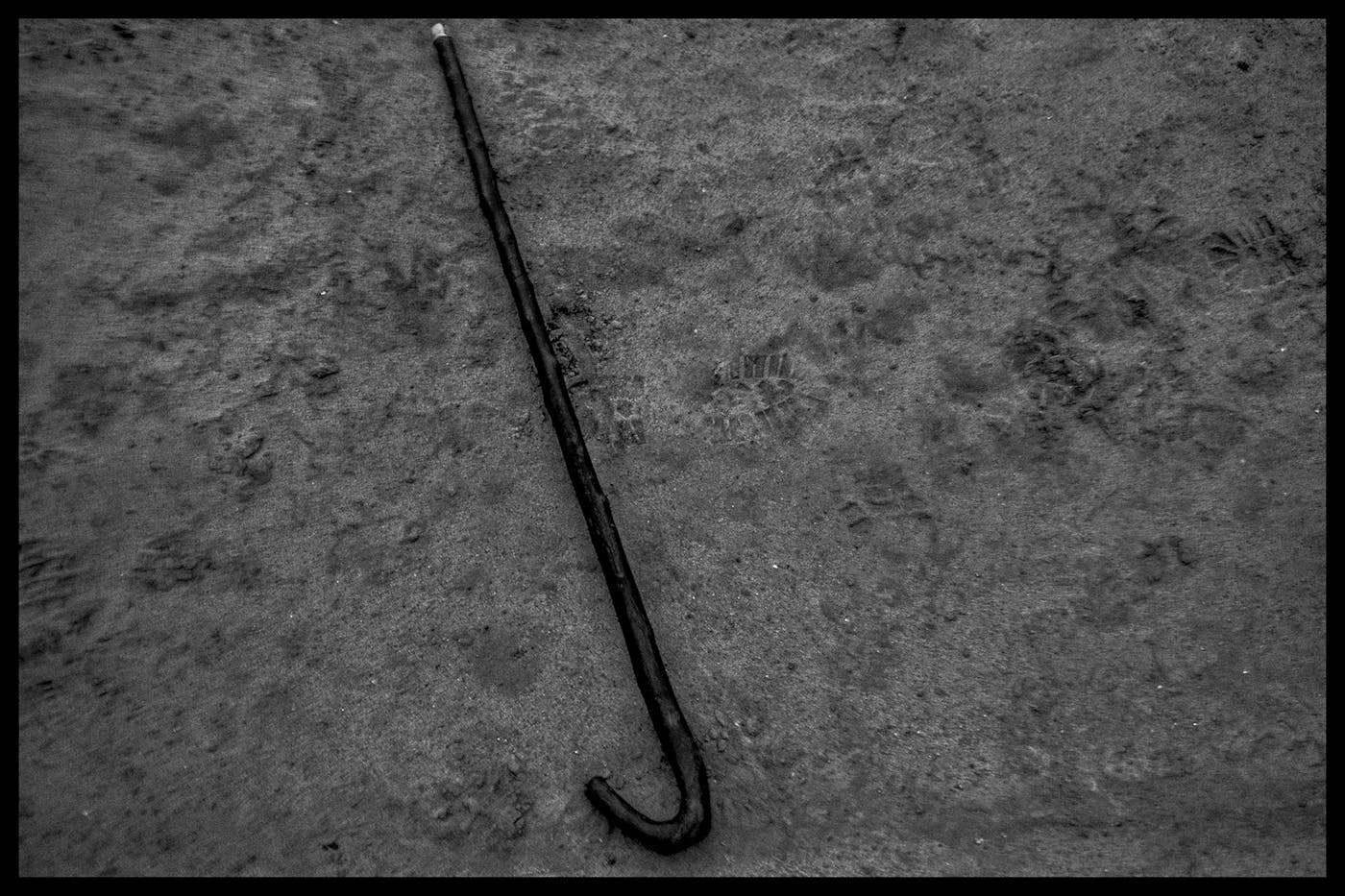
You see abandoned cars, stretches of them, their glove compartments’ contents spilled onto seats. This is what happens when you reach the literal end of the road: There is a blockage ahead, there are bombs behind, you must urgently leave your vehicle and take only what you can carry or drag for what may be miles or days of an onward journey to who knows where. We see in these photos the strips of white cloth Ukrainians tied to sideview mirrors, in the hope, often vain (there are bullet holes in some windshields), that the Russians would take notice of the surrender and refrain from shooting. Some cars bear a more explicit appeal to decency: “Children,” the hand-scrawled signs say.
Look at these photos of frozen sand that preserved the footprints of those who escaped. It is like Pompeii without ash—traces of a civilization in flight. You see, amid these embalmed steps, the tracks of what seems like bicycle tires but then you notice they are in parallel pairs, a few feet apart. You look at another picture and you realize what has made these tracks: baby strollers that have been abandoned. Did parents break into a run, grabbing their infants from their strollers, after a bomb fell nearby, too close? Was the path ahead impassable on wheels, so infants had to be carried?
And here, in another photo, you see more of the story, a corpse on a bridge over the Irpin River, crumpled to the ground, near a bicycle. Who was this person, what was the life he lived, what was his name—and how did he die? The range of answers narrows down to a general fact: The invasion killed him. The moment or direct cause—bullet? Mortar? Exhaustion?—little matters. Another question emerges, though it is not really a question, it is a fact: After he collapsed, others walked by, had to walk by; they could not help him, there was no time to bury the dead or even cover this man. Exodus demands everything of you, including leaving the fallen where they rest, so you do not become one of them.
The invasion of Ukraine has not gone according to Vladimir Putin’s plan; the Ukrainians resisted. In the past week, Russian forces withdrew from areas around Kyiv. In some of the once occupied towns, such as Bucha, horrendous war crimes have been revealed—bodies left in streets, hands bound behind them, gunshot wounds to their heads or backs. Though it is now possible to return to Irpin, there is no reason to do so for most who left: Their homes were destroyed. Their exodus continues.
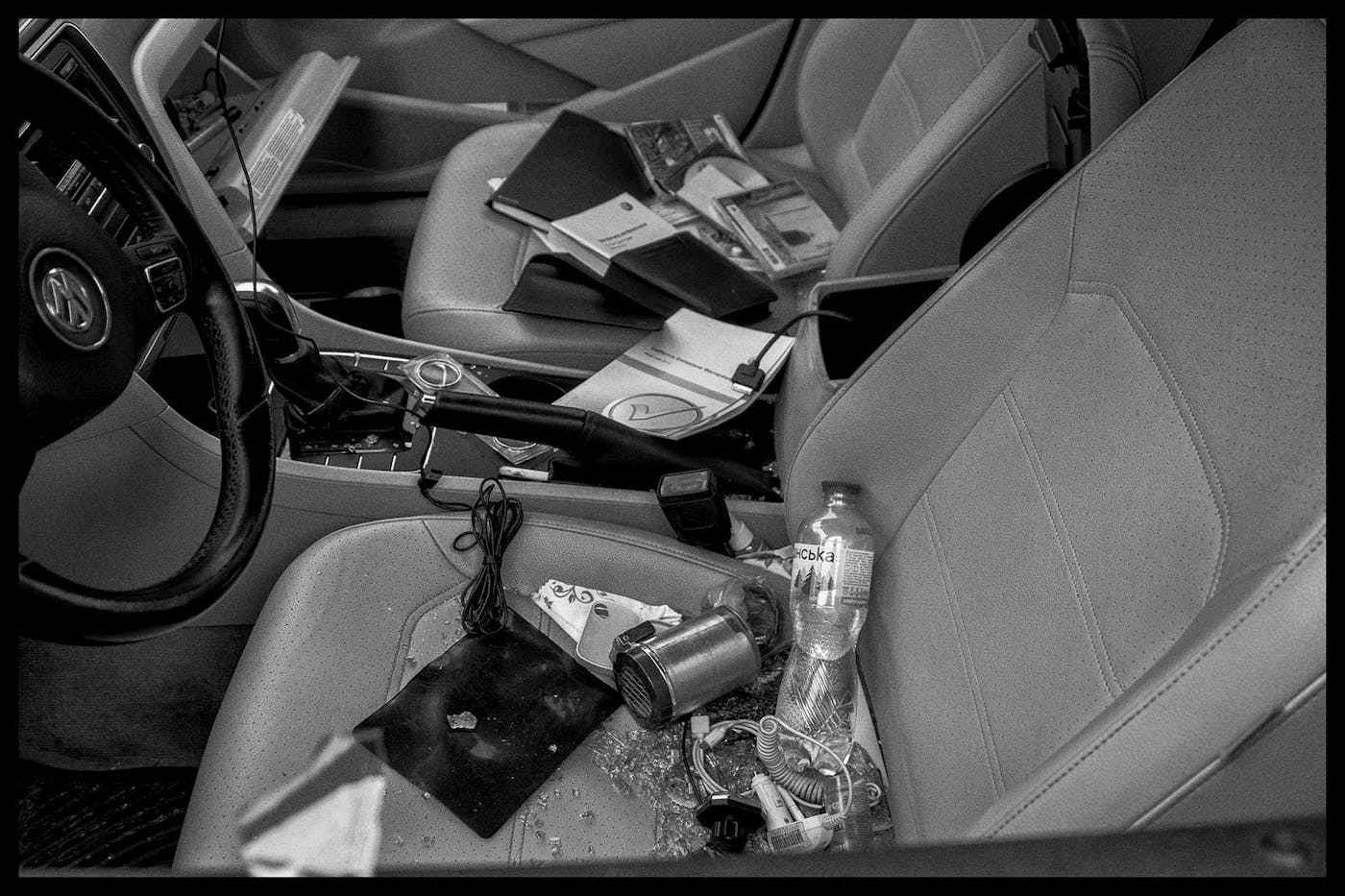
People left their cars and extra belongings to keep going on foot, onto the bridge over the Irpin River and to Kyiv and beyond, often to begin their lives as displaced persons or refugees.
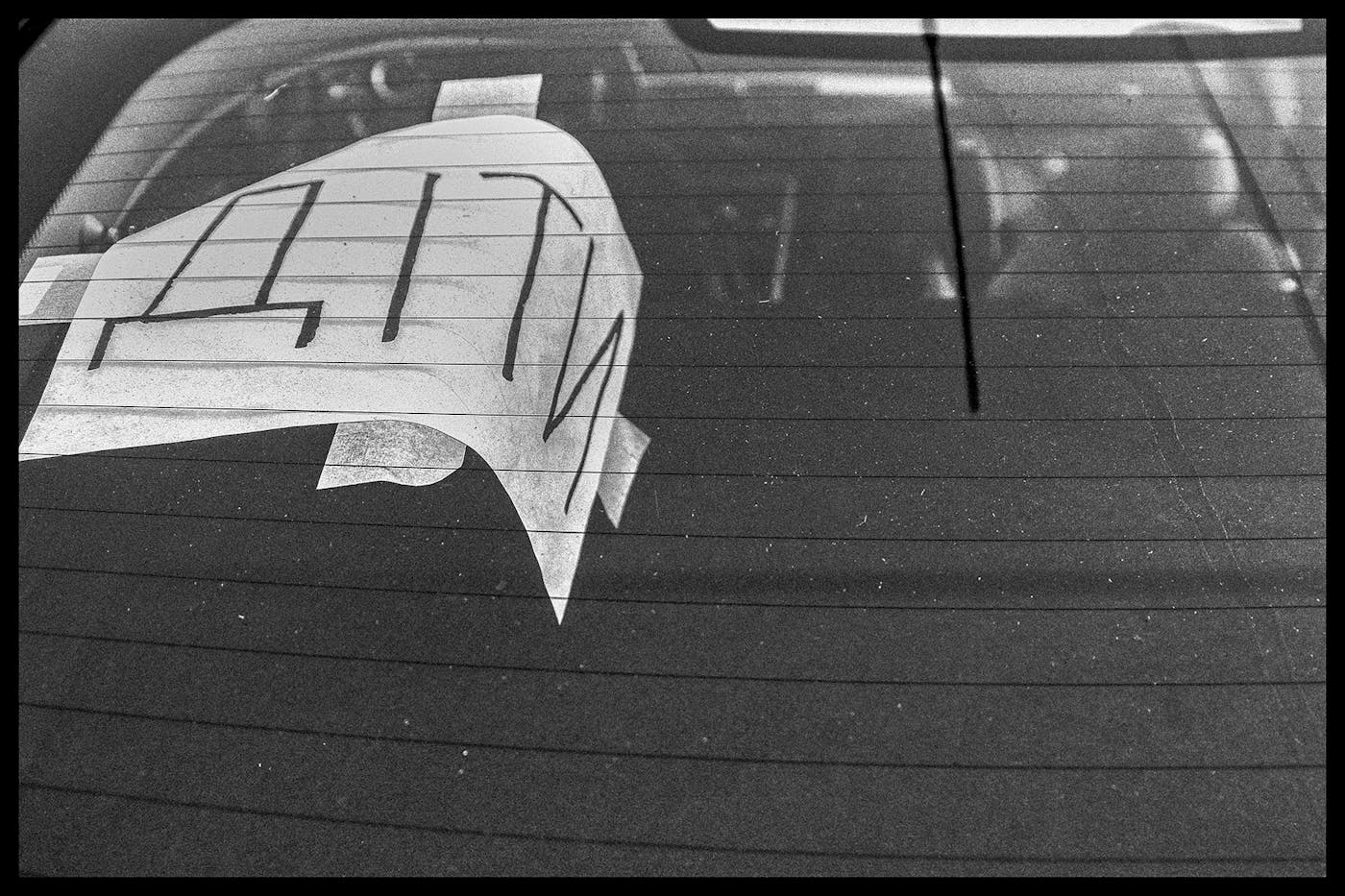
A sign saying “children,” placed in hopes that Russians wouldn’t attack the car
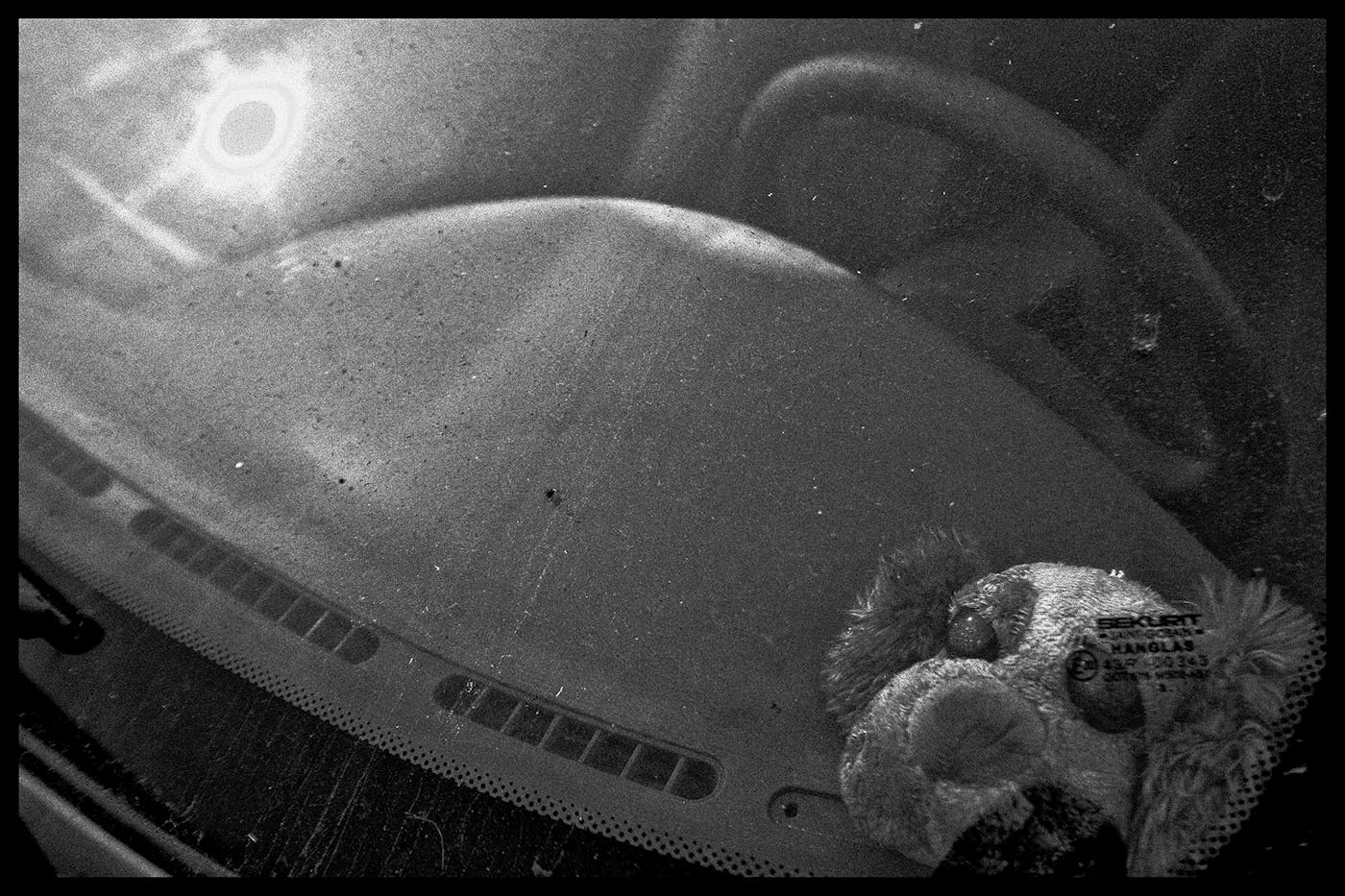
A child’s stuffed animal, left in the car
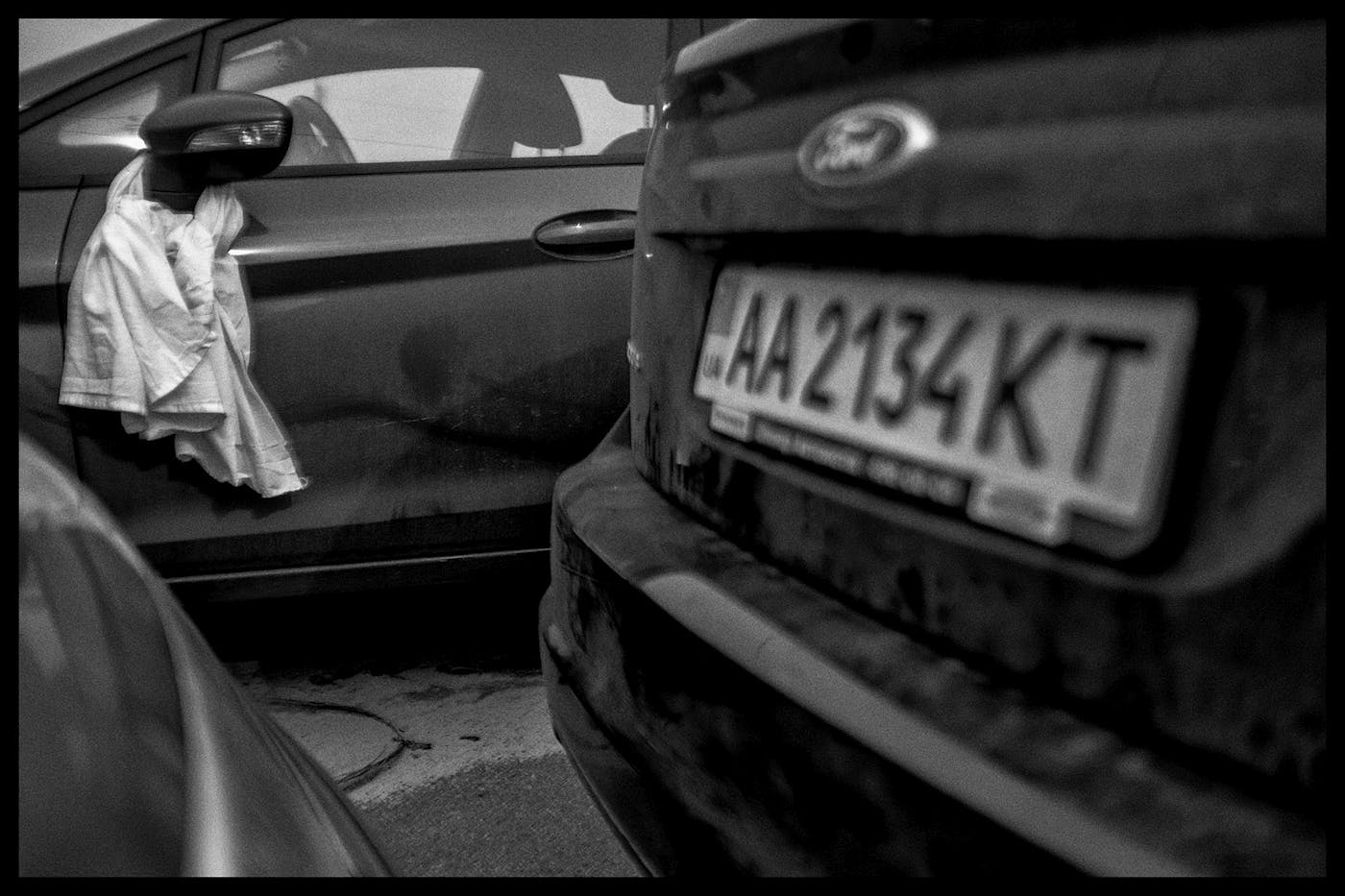
People tied white cloth to whatever they could to show they were civilians as they escaped from Irpin.

Rescue workers siphoned the gas out of abandoned cars to use as they picked up more people and took them to the Irpin bridge.
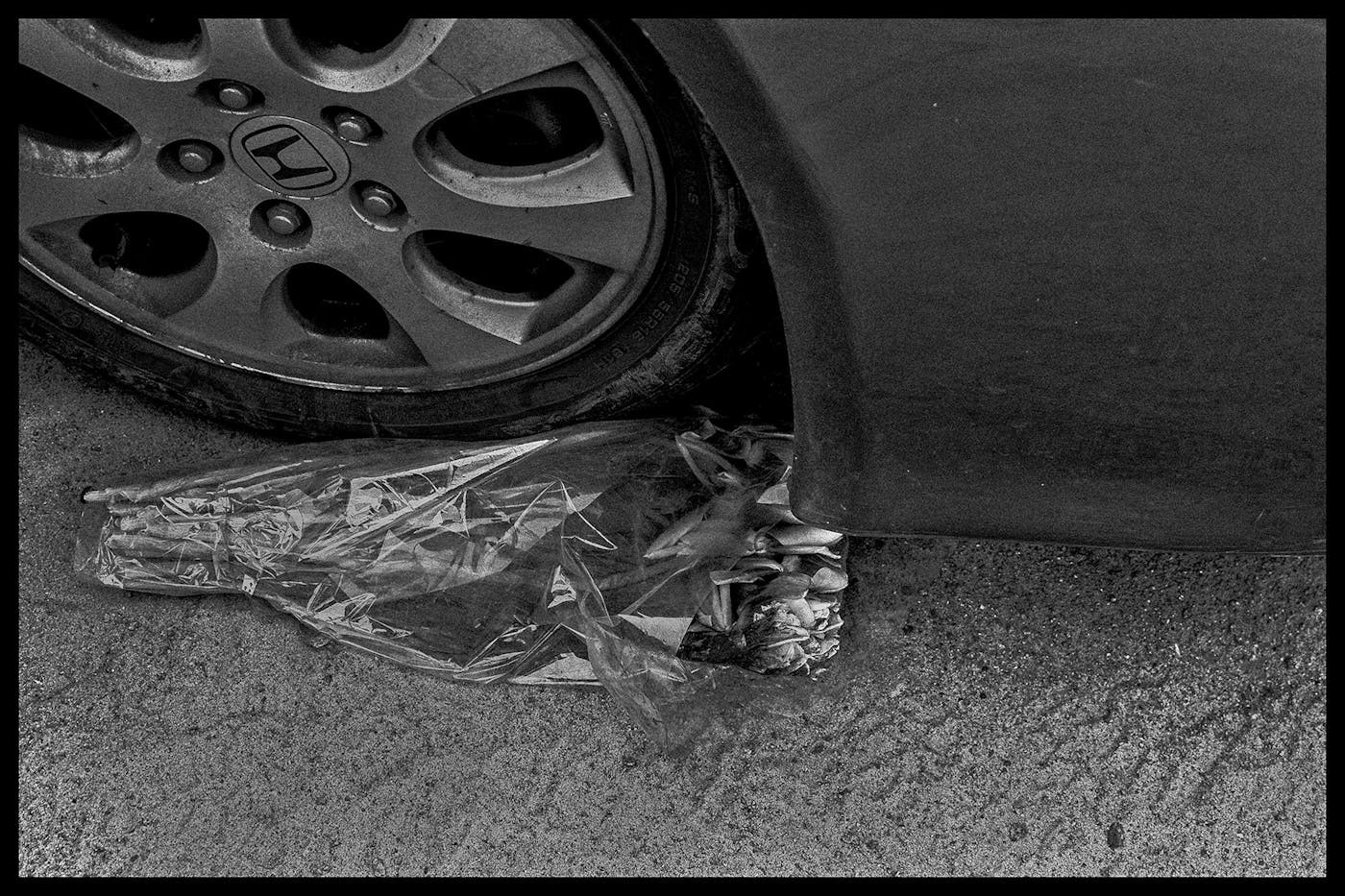
A bouquet of flowers, left under a car
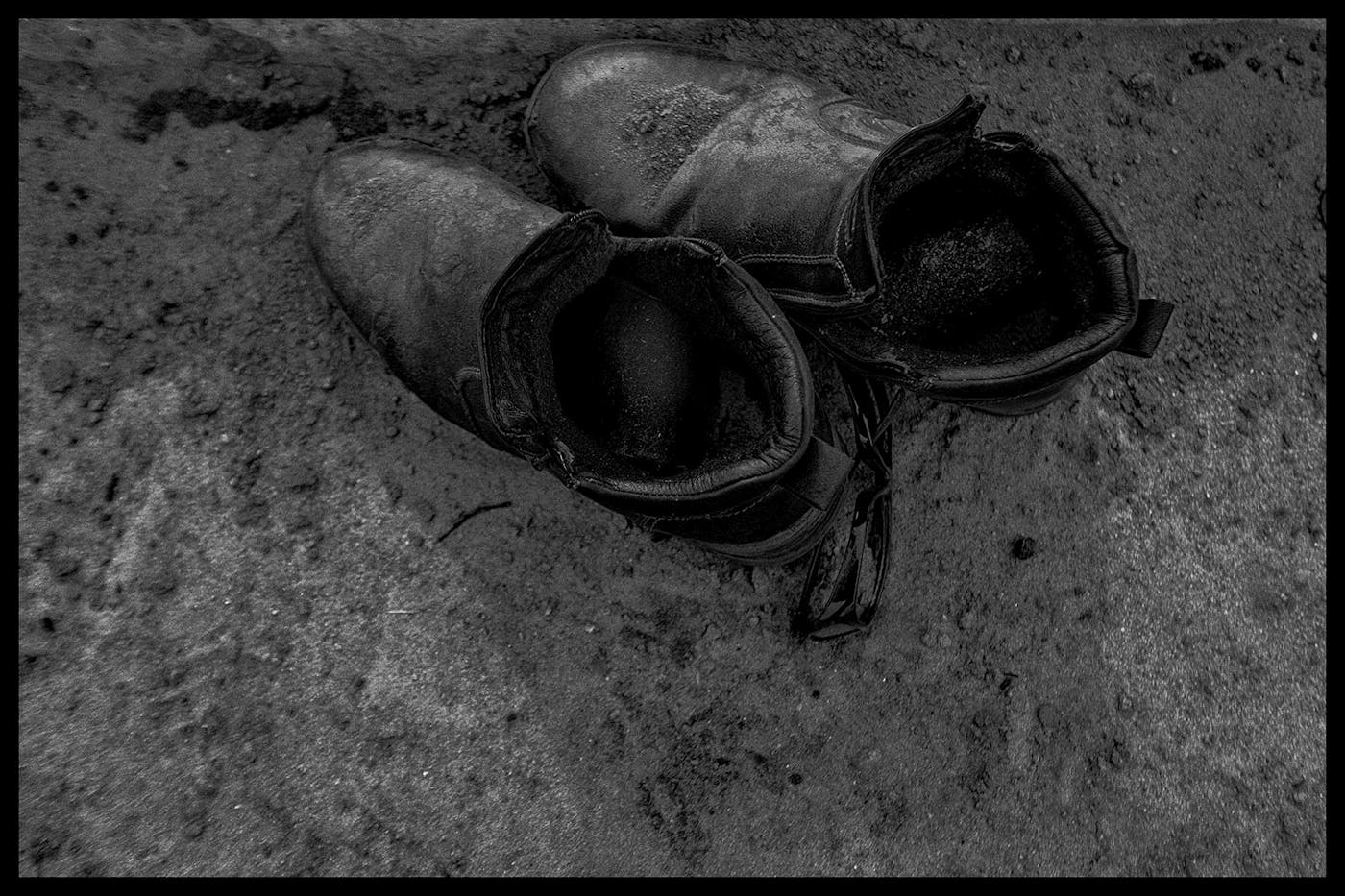
Shoes left by the road
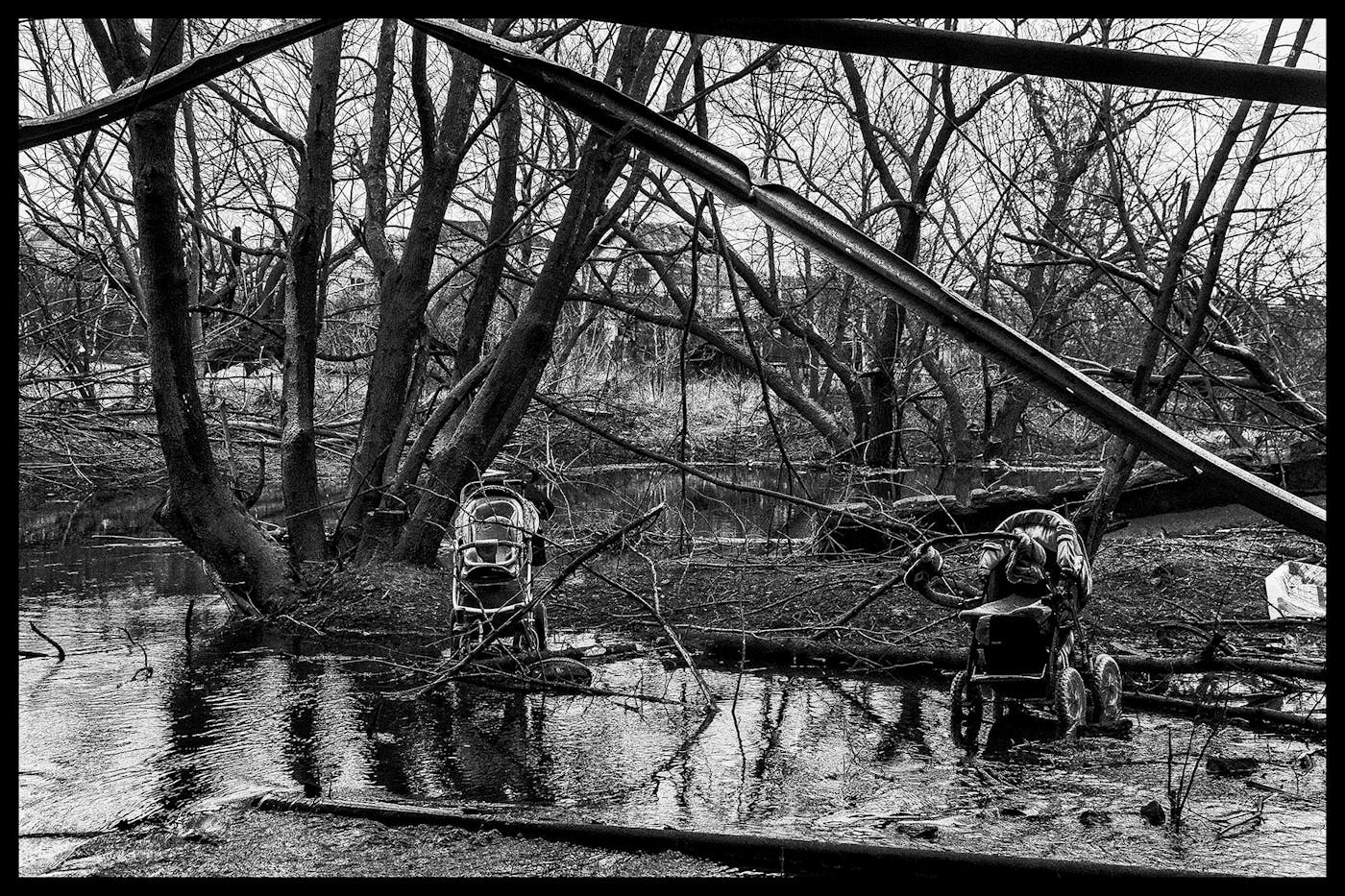
Abandoned strollers
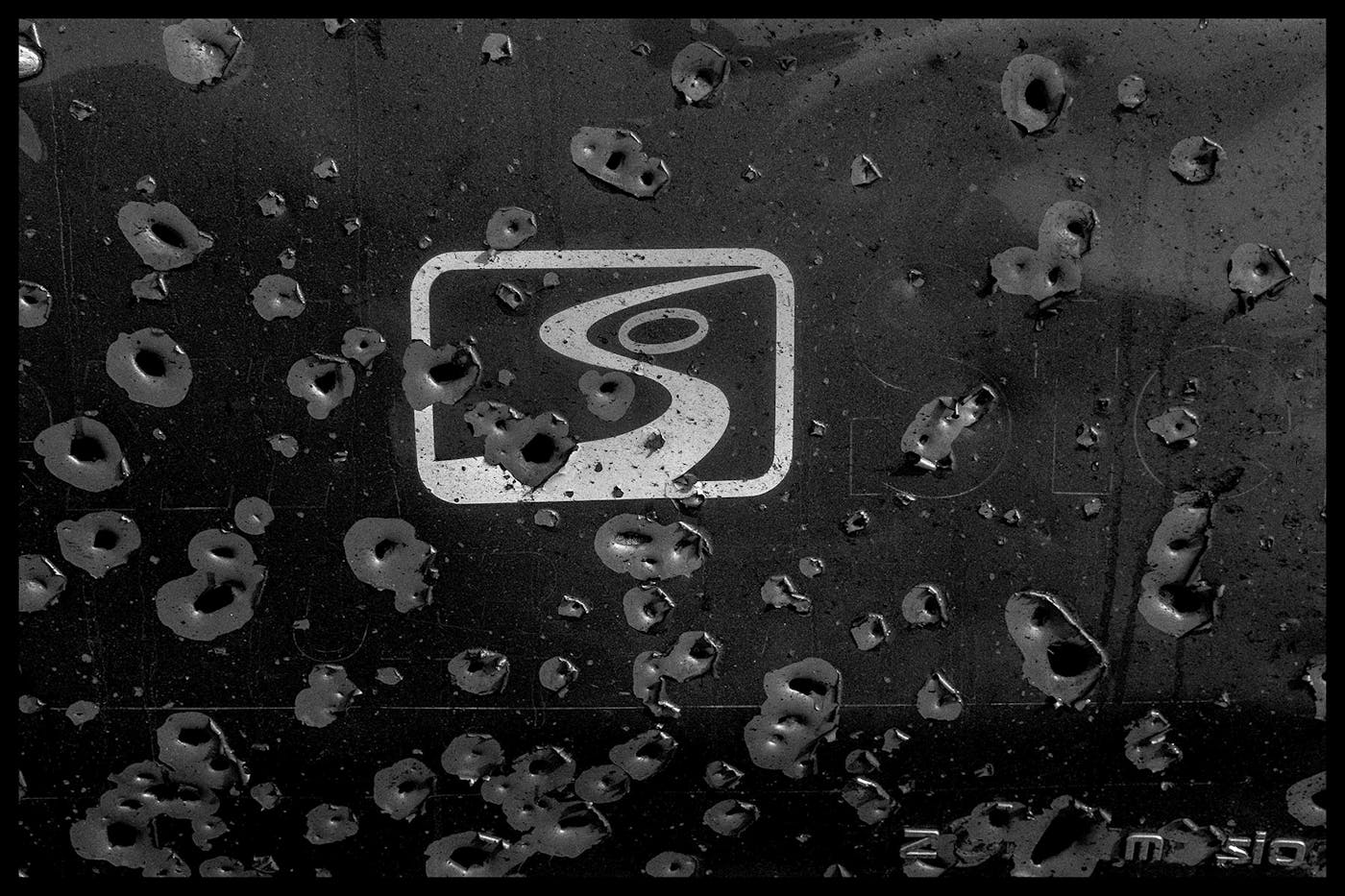
Shrapnel holes ripped into the side of a car
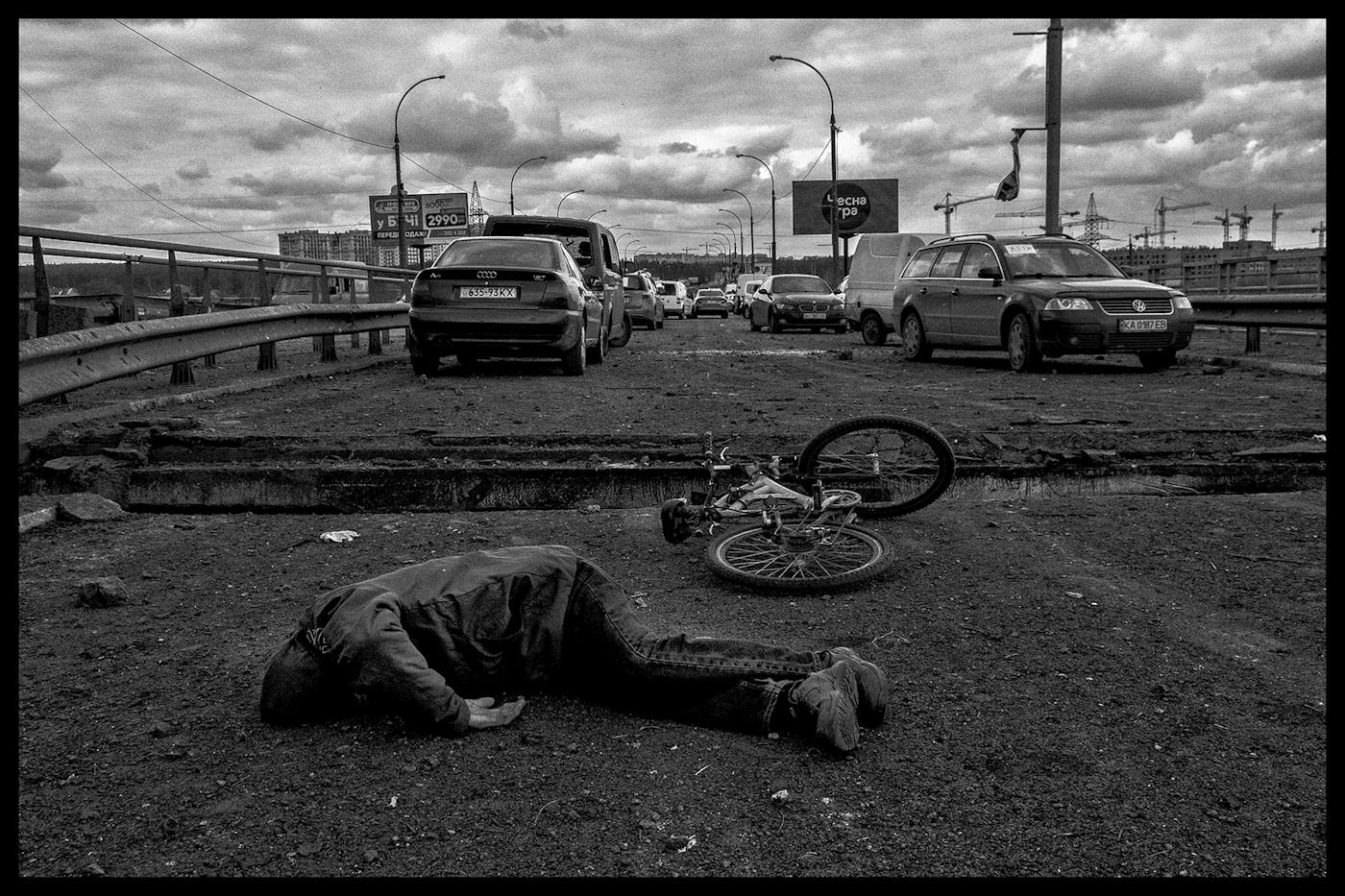
A man lies dead on a bridge, his bicycle and cell phone next to him, in front of a column of deserted cars.
